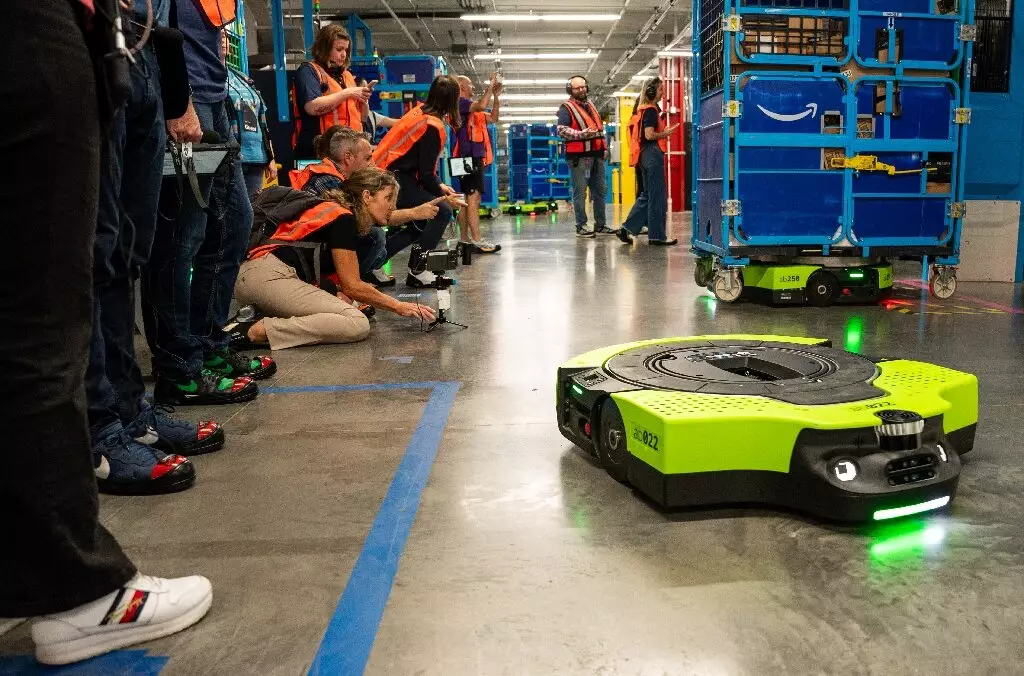Amazon has continually evolved, transcending its origins as an online bookstore to position itself as a multifaceted giant in e-commerce, healthcare, and entertainment. The company’s recent developments emphasize a relentless pursuit of innovation while simultaneously deepening its encroachment into various aspects of people’s daily lives. This move raises questions about competition, market dominance, and the implications of technology on consumer behavior.
Accelerating Delivery Services
At the heart of Amazon’s logistics success lies an intricate network that prioritizes speed and efficiency. Recent announcements indicate the introduction of advanced technology in delivery vehicles aimed at expediting package drops. Doug Herrington, the head of Amazon Stores, highlighted this enhancement, which allows delivery vans to identify stops and automatically adjust their drop-off protocols. Herrington suggests that quicker delivery times lead to increased customer engagement, which directly influences shopping frequency. “When we speed up deliveries, customers shop more,” he said, hinting at how the efficiency of logistics is intertwined with customer satisfaction.
As Amazon gears up for 2024, Herrington promised that Prime members would experience unprecedented delivery speeds globally. The company has demonstrated an impressive ability to reduce shipping costs—achieving a significant $0.45 decrease per unit last year, offering a notable competitive edge in an industry characterized by thin margins. The e-commerce titan reported over $30 billion in profits from a staggering $575 billion in revenue, thanks to both its retail division and the highly profitable Amazon Web Services (AWS).
Amazon’s business model is often described as a “flywheel,” where the Prime membership acts as the central cog, synergizing various facets of the company’s operations. According to eMarketer analyst Suzy Davidkhanian, this integrated approach positions Amazon uniquely in the market, allowing for seamless interactions between retail, cloud services, advertising, and digital content like streamed movies and music. The strategic bundling of services encourages consumer loyalty, making it harder for competitors to capture market share.
However, this dominance does not come without scrutiny. The U.S. government has filed lawsuits accusing Amazon of engaging in practices that could stifle competition and create an illegal monopoly. This situation highlights the complexities of Amazon’s infrastructure and challenges in maintaining consumer trust while growing its expansive portfolio.
Data-Driven Strategies and Sports Broadcasting
The crux of Amazon’s approach involves data—critical for targeting advertising and predicting consumer preferences. The company’s hefty investment into exclusive streaming rights, including NFL games on Prime Video, exemplifies how data analytics can enhance consumer engagement and tailor services to interests. This strategic gambit not only positions Amazon as a key player in the sports broadcasting arena but also provides valuable insights into consumer behavior, thus refining marketing strategies.
Moreover, Amazon is leveraging its digital assistant, Alexa, to further facilitate consumer purchases. By integrating the assistant into everyday appliances, the company has made it easier for customers to order essentials automatically, showcasing how technology can intersect with routine activities to simplify shopping experiences.
Innovations in Healthcare: Amazon’s Next Frontier
Amazon’s foray into healthcare could symbolize a significant leap in its operational landscape. The introduction of One Medical—a service providing on-demand video consultations for a nominal monthly fee—demonstrates the company’s ambition to become a comprehensive health platform. With the ability to access health care professionals at the push of a button and a dedicated pharmacy service promising speedy prescription deliveries, Amazon is likely to disrupt conventional healthcare access.
Hannah McClellan, the head of Amazon Pharmacy, described their vision of a “pharmacy in your pocket,” indicating a strong commitment to leveraging its logistics network for rapid medication delivery. This healthcare venture seems promising, especially as it positions the company to fulfill healthcare needs digitally, aligning with current trends in patient convenience and telemedicine.
While Amazon continues to invest heavily in automation, introducing “automated micro warehouses” and robotic systems to streamline operations, concerns about worker safety and conditions persist. Although automation may alleviate some physical labor burdens, critics argue that the company’s intense focus on speed can lead to dangerous working environments, especially in warehouses.
The recent technological integration in logistics has streamlined processes but has also raised alarms over the well-being of employees subjected to escalated performance pressures. A balanced approach is essential as Amazon forges ahead in logistics automation while ensuring that the human element is not compromised.
With ambitious goals and relentless innovation, Amazon continues to reshape industries and consumer interactions alike. Its strategic emphasis on speed, technology, and market integration positions it distinctly in the e-commerce landscape. However, as the company disrupts sectors such as healthcare and entertainment, it must tread carefully to maintain ethical standards, prioritize worker safety, and ensure fair competition in the marketplace. The journey ahead will inevitably shape Amazon’s trajectory and its responsibility within the broader scope of consumer society.


Leave a Reply